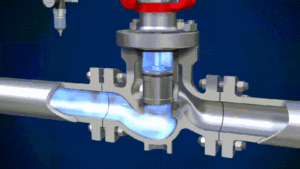In today’s rapidly evolving world, plumbing automation is transforming the way we manage water systems at home and in industrial settings. This plumbing automation overview will provide a comprehensive understanding of how these technologies are reshaping the industry. From smart water systems to AI-driven solutions, automation is making plumbing more efficient and sustainable.

What is Plumbing Automation?
Plumbing automation refers to the use of advanced technology to control and monitor plumbing systems. It involves integrating smart devices and software to improve efficiency, reduce water waste, and enhance the overall management of plumbing infrastructure. This technology is not just a trend but a necessity for modern industry.
The Rise of Smart Plumbing Systems
The advent of smart plumbing systems brings a new level of convenience and control. These systems allow users to monitor water usage, detect leaks, and manage water flow remotely. With the capability to integrate with home automation systems, smart plumbing is a crucial component of the modern smart home.
Benefits of Smart Plumbing
Smart plumbing systems offer numerous benefits, including reduced water waste, lower utility bills, and enhanced system longevity. By enabling real-time monitoring and alerts, these systems help users address issues promptly, preventing costly repairs and water damage.
The Role of AI in Plumbing Automation
Artificial Intelligence (AI) is a game-changer in plumbing automation. AI technologies can predict maintenance needs, optimize water usage, and even identify potential problems before they occur. For more information on AI’s impact on the industry, visit the AI in Plumbing Industry.
AI-Driven Predictive Maintenance
Predictive maintenance uses AI to analyze data from plumbing systems, predicting when maintenance is needed. This approach minimizes downtime and extends the life of plumbing infrastructure. To learn more about how AI enhances predictive maintenance, explore AI Plumbing.
Key Components of Plumbing Automation
Plumbing automation involves several key components, each playing a vital role in the overall efficiency and sustainability of the system.
Smart Water Valves
Smart water valves are essential in managing water flow and preventing leaks. These valves can be controlled remotely, providing users with immediate control over their water systems. For more on how these valves function, refer to the Smart Water Valves guide.
Remote Monitoring Systems
Remote monitoring systems enable users to oversee their plumbing systems from anywhere. These systems provide real-time data and alerts, ensuring that any issues are quickly identified and addressed.
Water Conservation through Automation
One of the most significant advantages of plumbing automation is water conservation. Automated systems optimize water usage, ensuring that no drop is wasted. This is crucial in regions facing water shortages and for businesses aiming to reduce their environmental footprint. For tips on water-saving practices, check out the Water-Saving Habits.
Real-Time Leak Detection
Automated systems are equipped with leak detection technology, which identifies leaks in real-time and alerts users immediately. This technology helps prevent water waste and reduces the risk of damage.
The Future of Plumbing Automation
The future of plumbing automation is bright, with ongoing advancements promising even greater efficiency and integration. As more homes and businesses adopt these technologies, the demand for skilled professionals in the field will grow.
Integration with Smart Homes
As smart homes become more prevalent, the integration of plumbing automation will become a standard feature. This integration will allow for seamless control and management of all home systems from a single platform. Discover more about this integration at Smart Home Monitoring.
Challenges in Plumbing Automation
Despite its benefits, plumbing automation faces challenges, including costs, technical complexities, and the need for skilled professionals. Overcoming these challenges will be crucial for widespread adoption.
Cost and Accessibility
The initial cost of implementing plumbing automation can be high, posing a barrier for some users. However, as technology advances and becomes more widespread, costs are expected to decrease.
Technical Challenges
Technical challenges include the need for reliable internet connectivity and the integration of various systems. These challenges require ongoing innovation and development to ensure seamless operation.
Conclusion
In conclusion, the plumbing automation overview reveals a field full of potential. As technology continues to advance, the benefits of automation in plumbing systems will become increasingly apparent, driving efficiency, sustainability, and innovation in the industry.

FAQs
What is plumbing automation?
Plumbing automation uses technology to control and monitor plumbing systems, enhancing efficiency and sustainability.
How does AI impact plumbing automation?
AI enables predictive maintenance and optimizes water usage, improving system efficiency and reducing costs.
What are the benefits of smart plumbing systems?
Smart plumbing systems offer real-time monitoring, leak detection, and remote control, reducing water waste and lowering utility bills.
This article contains affiliate links. We may earn a commission at no extra cost to you.



